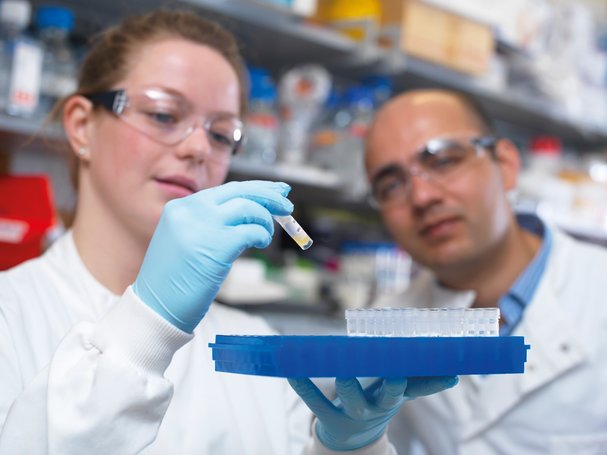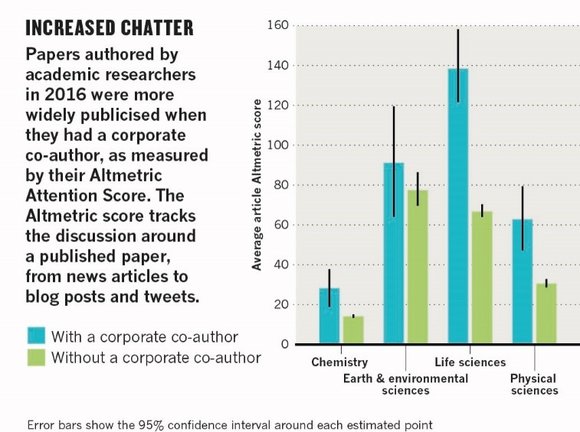
When corporate and academic researchers partner on a project, their findings are shared widely on the web. Credit: ANDREW BROOKES/GETTY
Corporate collaboration boosts buzz on research
Papers authored by academic and corporate partners are more widely discussed online.
1 December 2017

ANDREW BROOKES/GETTY
When corporate and academic researchers partner on a project, their findings are shared widely on the web.
In early 2016, Robert Langer published a paper in Nature Materials that took the web by storm. It was mentioned in 289 news articles, 120 tweets, 15 Facebook posts and even made an appearance on Reddit.
“Did MIT just invent a second skin? #The MoreYouKnow #WTF #DidYouKnow” asked OMGFacts on Twitter. “Scientists create lotion that makes wrinkles invisible” reported ABC News.
Langer, a chemical engineer at Massachusetts Institute of Technology, had developed an invisible material that could be applied on the skin to reduce the appearance of under-eye bags and wrinkling. “We not only made an advance in materials, but we showed it worked in humans on a problem of significant human interest,” he explains.
The research was a result of a collaboration between MIT, hair-care company Living Proof, and skincare company Olivo Laboratories, both of which Langer helped to found. Corporate–academic collaborations, says Langer, ensure that there is “more of a chance” that studies “are addressing a problem of potential human interest, and that people can easily relate to.”
Langer’s assessment is reflected in a recent investigation into the Altmetric Attention Score of papers published in the Nature Index in 2016. Articles authored by academics were more discussed on the web when they had a corporate co-author than when they didn’t.

Academic papers with no corporations listed as authors had an average Altmetric score of 40, compared to 87 when an academic partnered with a company. Langer’s paper received a whopping score of 2,281, the fourth highest index paper in 2016.
The top-scoring article, with an Altmetric score of 3,023, involved a potential therapy for slowing the decline in patients with Alzheimer’s disease, published in Nature. The authors were affiliated with biotech company Biogen and the University of Zurich. Another notable publication involved a plastic-munching bacteria discovered by researchers at Kyoto University, Keio University and Japanese chemical and food company ADEKA.
There could be many reasons for why collaborating with a company results in more online babble, says Altmetric founder, Euan Adie. Corporate communications teams might be better equipped at keeping track of their internal research and promoting it, he says. When a corporate co-author and funding is involved academics might also be “more keen for the resulting paper to get attention to stay in favour.”
Another reason, says Adie, could be that corporate partnerships give academics access to “large, otherwise unavailable datasets, which tend to be exciting or worth writing about.” An example of this was the most-discussed paper of 2014, in which researchers at Cornell University conducted an experiment on Facebook, revealing how contagious emotional states can be.
And in 2016, the pharmaceuticals company Pfizer teamed up with Massachusetts General Hospital to analyse data provided by the genetic testing service 23andMe of more than 75,000 individuals. The study (Altmetric score 1,484) identified several genetic loci associated with the risk of depression.
Data analysis by Willem Sijp.
